Add Comment
La borrasca Claudia deja rachas de hasta 80 km/h en Lanzarote • InformativosTvc
Meteorología adversa en el Aeropuerto de Lanzarote obliga el desvío de siete vuelos • InformativosTvc
Jameos del Agua, Lanzarote, acoge el debate global sobre la Carta Mundial del Turismo Sostenible +30 • InformativosTvc
La Muestra de Cine de Lanzarote encara su recta final tras diez días de actividad • InformativosTvc
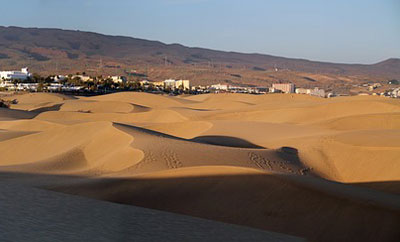


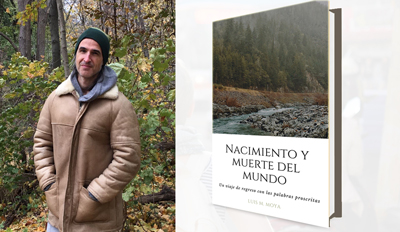

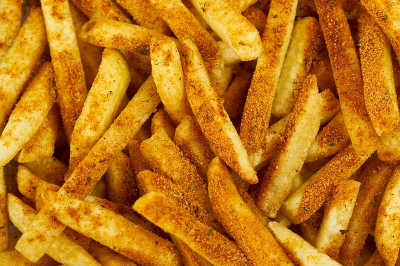
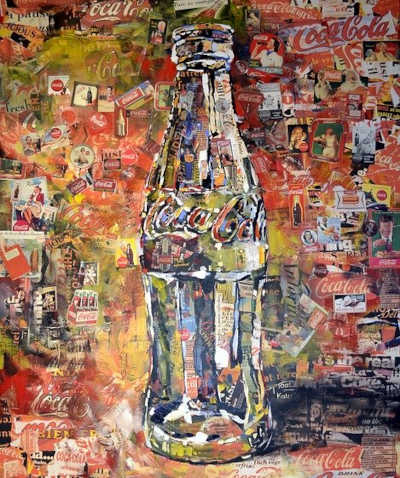
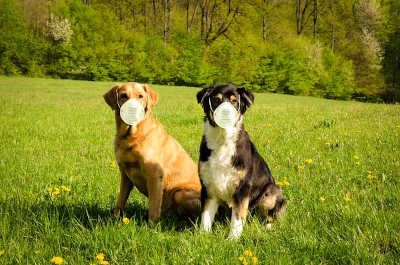



Lanzarote, which is known for its mild climate, is the easternmost island in the archipelago and is the fourth largest of its kind, and owes its name to the Genoese navigator, Lanzerotto Malocello, who discovered it in 1312.
It’s of volcanic origin, and it’s the one that more than the other islands shows this characteristic, in fact, the black of the lava is a predominant colour.
Volcanoes are the essence of this magical island, almost all the natural attractions that can be visited stand out this characteristic. This soil, so dark, seems to have come from another planet, is an integral part of the life of its inhabitants.
TIMANFAYA NATIONAL PARK
Declared a National Park in 1974, it takes its name from one of the eleven villages buried by the lava and ashes of eruptions in the eighteenth century, from 1730 to 1736.
The phenomenon lasted for 2056 days and involved about thirty volcanoes. Nowadays, of all the volcanoes on the island, only Timanfaya is active.
The Park can be visited by guided tours and in small groups, to minimize the human impact on such a vulnerable reality declared a World Heritage Site by UNESCO.
TEGUISE (VILLA DE TEGUISE)
For those who want to know the island, it is impossible not to pass through Teguise. It’s, in fact, the ancient capital, and it was one of the first urban agglomerations of the archipelago. Also, it’s the largest town hall, reaching both east and west coasts.
Teguise, with its stone streets and its typical white houses, is recognized among the most beautiful villages in Spain.
Although it is no longer the capital, it is very vital and full of cultural and commercial activities. For example, every Sunday, Teguise comes alive thanks to the craft market, where there is space for both artisans and agricultural producers.
Other interesting proposals are the Timple Museum, which tells the story of this tool through cultural activities, and the Museum of Piracy. The latter is located in the castle of Santa Barbara, where you can have a fantastic view of the island. Teguise also includes in its municipality beautiful beaches and beautiful villages on the coast, such as Costa Teguise and Famara, known for its sporting soul.
CUEVA DE LOS VERDES Y JAMEOS DEL AGUA
Although they are two sites to visit separately, they are connected by what is called the Tunnel of Atlantis and are the largest volcanic caves in the world.
The first is made up of galleries and natural rooms, illuminated by the wise hand of Jesus Soto, who also designed the route. Also clearly visible is Manriquez’s work, with its play of light, shadow and lava.
About halfway through the excursion, it will be possible to see one of the largest halls, converted into an auditorium. Thanks to its particular acoustics, it has hosted very unique concerts in recent years. But to discover the secret that is hidden in this place of hypnotic colours you have to get to the end.
Jameos del Agua is made up of tunnels and caves of volcanic origin partially sunk. It was the genius of Cesar Manriquez who transformed this wonder of nature into a place of entertainment, both for tourists and for the inhabitants of the island. Inside there are many accessible environments, such as the auditorium, which can accommodate up to 550 people and which hosts many musical events. There is also a small café bar with terrace, a restaurant and the House of Volcanoes, a museum dedicated to volcanology.
Both Jameos del Agua and the Cueva de Los Verdes are the perfect syntheses between the island’s volcanic naturalness and tourist activity.
SPORT TOURISM
Lanzarote has a sporting soul, it is, in fact, an excellent choice for those looking for sports and dynamism throughout the year.
The island hosts numerous international sports events, such as the well-known Ironman, but it is great for those who practice sports even at a non-professional level.
For example, Municipalities and Island Council organize guided trekking routes together with cooperatives in the sector. And thanks to these activities, divided by levels, you can visit emblematic places of the island.
In addition to these, there are many sports that you can practice in Lanzarote, such as golf, surfing, kitesurf, windsurfing, sailing and many others.
THE SOUTH OF THE ISLAND
The south coast of the island is formed by many sandy beaches, including well-known Playa Blanca and Playa Papagayo.
Playa Blanca is a small town in the municipality of Yaiza, which occupies a large part of the south coast and is a very important tourist centre on the island. Many foreigners choose this place to spend the winter, both for the climate and for the lifestyle.
Playa Papagayo is a protected area, formed by various beaches. Reaching it is not difficult, but you have to walk a few kilometres of dirt road.
It’s perfect for those seeking tranquillity, in fact, human activities are reduced to basic services and this allows you to enjoy a relaxing day at the beach.
Thanks to the striking contrast, between its white sand and black rocks, is one of the most photographed places on the island.
TINAJO AND MANCHA BLANCA
Tinajo City Hall occupies the west-central area of the island, reaching the coast. Thanks to its scenic features and its proximity to Timanfaya and Tinguaton volcano, its volcanic origins are very evident.
Mancha Blanca also belongs to the municipality, a small village that takes its name from the showy white spots present in the Caldera Blanca, another of the volcanoes of the area.
We must not allow ourselves to be fooled by the size of this small urban agglomeration, which is full of agricultural and commercial activity.
Every Sunday, there are many inhabitants of Lanzarote who go to the agricultural market organized in the main square, to buy delicious local products.
Besides, once a year, Mancha Blanca hosts one of the most important Craft Fair of the archipelago, which presents ancient crafts still present and revalued on the island, from the processing of leather and textiles to the processing of natural soaps, from ceramic creations to wood decoration, and much more.
In recent years the event has grown to host professionals from other islands and not only, but it has also become an event known at national and international level.
If you’re in this area, it’s impossible not to visit the church Nuestra Señora de Los Dolores, also known as Nuestra Señora de Los Volcanes. It is located exactly in the point where the lava, for the violent eruptions of the eighteenth century, stops, saving the inhabitants.
Every year, on September 15, a solemn procession is organized, with the typical clothes of the island, to pay homage to the patron saint of Lanzarote.
The area, with its many shops and craftsmen, is really ideal for those who want a nice memory of the island and try, between a walk, the authentic Canarian cuisine.
About 7 km from Tinajo is the coastal village of La Santa. It is one of the few tourist centres of the north coast and is one of the favourite destinations for professional athletes and sports lovers.
In fact, the expression of this sporting soul is the Club La Santa, where they offer about eighty sports and numerous activities' for every level and age'.
HARIA
Known as the Valley of the Thousand Palms, it is located in the north of the island. Here you can find most of the native flora because thanks to its special microclimate it is the greenest area of the island.
Haria hosts every Saturday, in its beautiful main square, the handicraft agricultural market, specialized in the sale of local ecological products.
Near the centre, there is also the house-museum of Cesar Manrique, where the artist finds the perfect place to stay in touch with the nature he loved so much and where he lived until 1992, the year of his death. Here it is possible to know the daily life of this very important figure.
Haria includes in its territory some small beaches and natural pools, such as La Garita, la playa de la Canteria, with its beautiful view to the Graciosa, and Caleton Blanco, with its spectacular colours.
There are also many proposals for trekking lovers, such as the trails on the volcano de la Corona, characterized by its large crater. It is accessed through a network of trails, of various levels and lengths, immersed in nature and surreal colours.
THE PLACES OF MANRIQUEZ
You can’t talk about Lanzarote without mentioning the personality and work of Cesar Manrique. The basic ideology of his art was that any human creation should be in harmony with nature, without changing its connotations and essence.
Manrique believed in tourism respectful of the environment and the peculiarities of the territory, for this I create sculptures and environments, all open to the public, which are real jewels set in this black earth.
His works seem to be created by nature itself.
Among the most famous are: Jameos del Agua, the Campesino House, Mirador del Rio, Cactus Garden.
His own house, now home to the Cesar Manrique Foundation, is open to the public. I take advantage of the space of five volcanic bubbles, developing the structure on two levels, and I reach an area of more than a thousand square meters.
Without any doubt it can be said that Lanzarote itself is one of his works, in any corner of the island there are traces of its passage.
GASTRONOMY, WINES AND MORE
Lanzarote has inherited from its aborigines (Guanches) a good part of its culinary habits, although over time the Spanish and South American gastronomic influence has been strong.
Its dishes are highlighted by the simplicity and quality of the ingredients.
From meat to fresh fish, from vegetables to cheese, without forgetting its legumes, the visitor will be surprised by its variety', ensured over the years by the know-how of its inhabitants.
Among his most famous dishes are the papas arrugadas, accompanied by tasty sauces, Mojos, and the gofio, a toasted cereal flour that is the basis of many preparations, sweet and salty.
No less important is the wine sector, with its unique cultivation method in the world that has been handed down for generations.
Those who visit the numerous wineries in the area are struck by these low vines, about 30-40cm, sprouting from the lava and protected from the winds by semicircles built of stone.
The way it is grown is really special and complex, it exploits the thermoregulatory ability of volcanic ash. This prevents water, of low rainfall and night humidity, from evaporating too quickly and being released into the soil gradually, ensuring plant nutrition.
But Lanzarote isn’t just good wine and good food. The island has been overwhelmed by the craft trend. In fact, some small independent breweries were established.
Although the local public is not yet accustomed to the particular flavour of craft beer and a growing market and given the quality of these productions without a doubt worth a try.
The two most well-known companies in the sector are NAO and MALPEIS. Both allow a guided tour of their establishment and tastings, accompanying the visitor in the discovery of the world of craft beer, from hops to glass.
ARRECIFE-PUERTO DEL CARMEN
Arrecife is the current capital of the island and is among the most visited places in the archipelago.
It’s the smallest town hall, but it’s the most populated and it’s a big tourist centre.
For example, Playa del Reducto, a beach with clear sand, is a place of relaxation for many tourists every year.
Continuing the promenade, flanked by the ocean, you get to the castle of San Gabriel, a fortress which can be accessed through an ancient and evocative bridge. Inside it is the museum of the history of Arrecife.
Equally interesting is the International Museum of Modern Art, which is located in the castle of San Jose.
As well as monuments and beaches, the capital offers many wonderful places, such as the Charco of San Gines, where the ocean water forms a picturesque lagoon framed by small white houses.
In the past this was where the fishermen of the city lived, so they could moor their boats in a safe and protected by currents. Nowadays, this has been converted into one of the most vital areas of the capital, it hosts many restaurants and bars. At night, with the reflection of the lights on the water, it seems to shine.
Arrecife is also characterized by ancient traditions and popular festivals, including that of San Gines, already recognized as a National Tourist Interest.
The event lasts 10 days, during which processions, holidays and cultural events are organized. At the end of the celebrations, fireworks are organized at the Playa del Reducto, an impressive show in honour of the city’s patron.
A little further south is Puerto del Carmen, which belongs to the municipality of Tias. It is one of the most important tourist centres, in fact, it hosts many hotels and residences also of international brands, and its promenade is a succession of restaurants, shops and bars. These have the tourists as their main target.
The resort extends for about 7km of coast, with beautiful sandy beaches, appreciated by both national and international tourism and residents. These include Playa Grande, the largest, Playa Chica and Playa de Los Pocillos. Moving a bit south, there is Playa Quemada, a small village appreciated for its tranquillity. Its beaches are mostly rocky but passing through these, with a nice walk, you get to a beautiful sandy beach.
A 'curiosity' about the island... Lanzarote was a location also loved by the world of cinema. It has hosted many famous productions, including some Marvel films, such as The Eternals. But not only that, but it was also chosen because of its unique landscape by directors such as Ron Howard and Pedro Almodovar.
Lanzarote is not only sun and sea, but it is also a unique and delicate environment, welcoming and without a doubt, its colours and shapes will remain forever imprinted in the memory of those who visit it.
Imagen de Monica Volpin